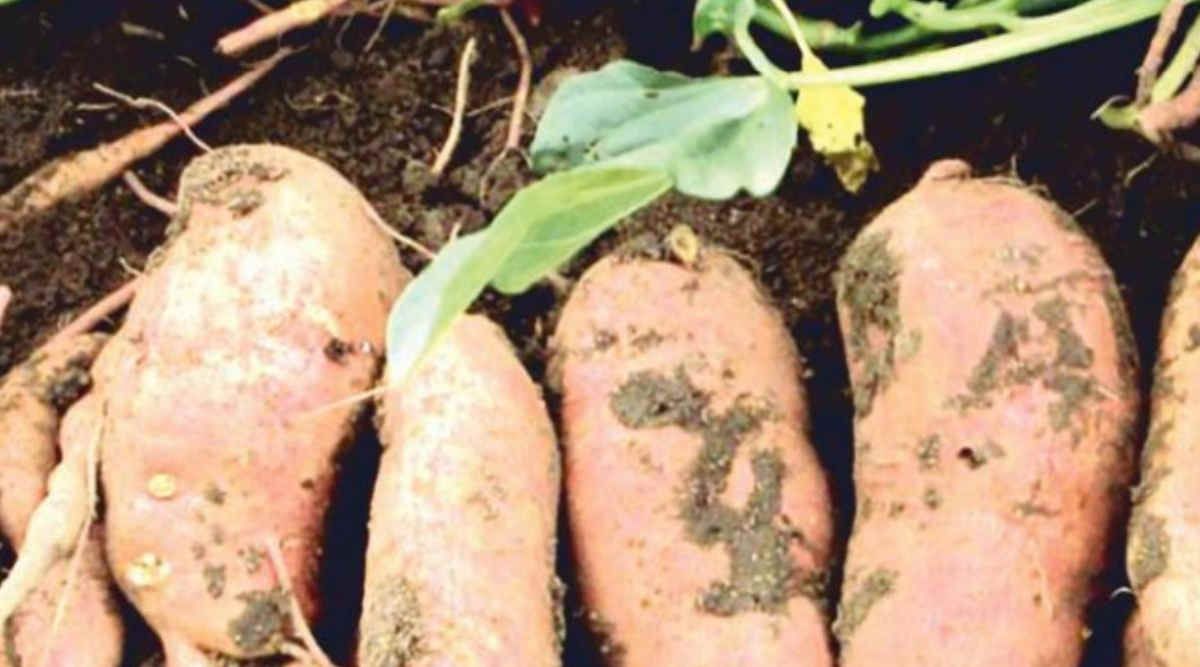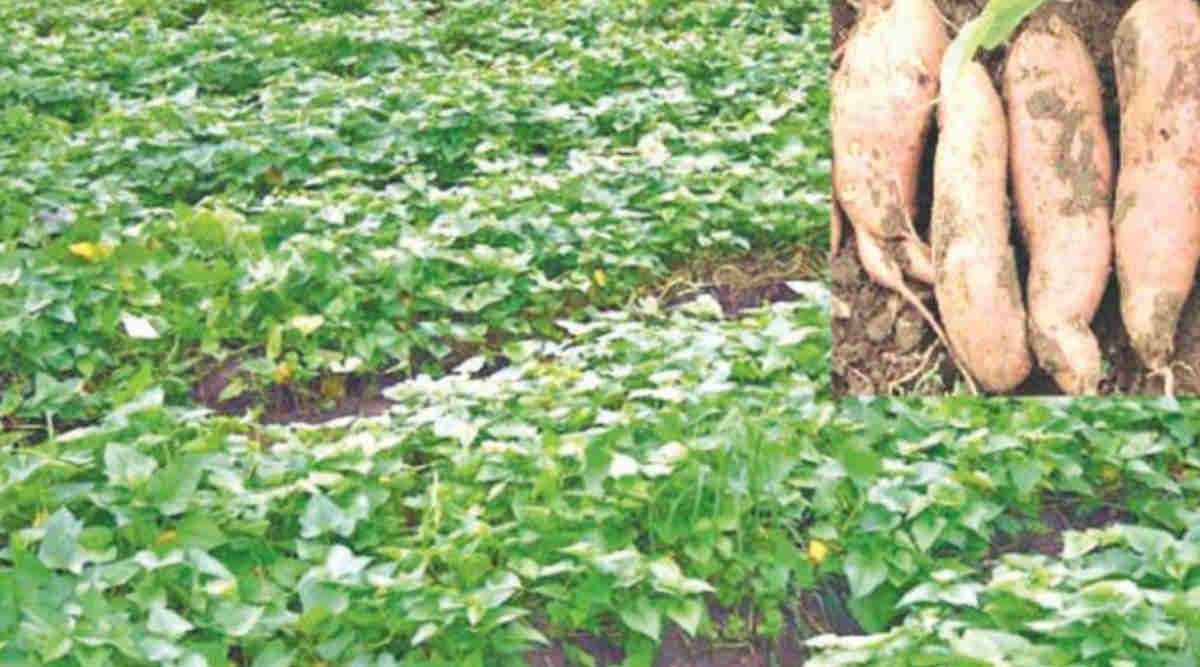Increase yield and income by advanced cultivation of Sweet Potato
Sweet potato is a treasure trove of nutrients, it is rich in starch rather than sugar.
Improved cultivation of sweet potato | Due to the sweetness present in the taste, it is a common belief that it is rich in sugar, whereas scientific facts are completely opposite to it. The truth is that the amount of starch in sweet potato is very high. Because of this, its taste is very sweet. It is considered a treasure trove of nutrients, which is why it is traditionally consumed as a fruit during fasting days. Although it is grown all over India, 21 to 26 degree Celsius temperature is considered suitable for its cultivation.
India ranks sixth on the list of sweet potato-producing countries. But the productivity rate in India is very low. That’s why it is very important to adopt advanced agricultural techniques in the advanced cultivation of sweet potato in India. In the non-irrigated areas of the country, where the average production is 80 to 100 quintals per hectare, in the irrigated areas the yield ranges from 200 to 260 quintals per hectare.

It is cultivated the most in temperate climate areas such as Odisha, Bihar, Uttar Pradesh, Madhya Pradesh, Rajasthan, West Bengal, and Maharashtra. Areas with an annual rainfall of 75 to 150 cm are considered best for sweet potato cultivation. Well-drained loam or clay loam soil is considered the most suitable. The pH value of such farming soil should be 5.8 to 6.7.
Also Read: Saffron Cultivation: Extracting from flower is hard and delicate
Improved Varieties
According to the experts of ICAR-Central Institute for Arid Horticulture, the names of improved varieties of sweet potato are – Pusa Safed, Pusa Red, Rajendra Shakarkand 51, Pusa Suhavani, No. 4004, S-30, S-35, S-43, Varsha, Konkan, Ashwani, Shree Bandini, Shree Nandani and Kiran, etc.
Field preparation
The first plowing is done with a soil-turning plough. After this, the field level by doing 2-3 plowing with a local plow or cultivator. Mixing 170 to 200 quintals per hectare of rotten cow dung manure in the field before the last ploughing, yields are good.
Also Read: Cultivation of smooth ridge gourd will help earn double profit
Sweet Potato Seed Cuttings
In the cultivation of sweet potato, cutting of its tuber is done and transplanted. Talking about the seed rate, 40 to 45 thousand cuttings or seed pieces have been considered sufficient for planting in one hectare. Each cutting of the tuber must have at least 3 to 4 nodes. At the time of transplanting, the length of the cutting is kept at 25 to 30 cm. The cuttings should be kept in 2.5% Borax solution for 8 to 10 minutes and then dried and then sown. By this process the seed treatment of sweet potato is done.
Method of transplanting
Transplantation of sweet potato cuttings can be done on flat places as well as on ridges. Plants should be prepared from its cuttings in the nursery from May to June-July. And, in August-September, they transplant it in the fields. At the time of transplanting the cuttings should be planted at a depth of about 3 to 4 inches below the soil surface i.e. 6 to 8 cm keeping the row to row distance of two feet and plant to plant distance of one foot.
Irrigation
After transplanting of sweet potato cuttings, if there is less moisture in the field, first irrigation should be done after 5 to 7 days. If the rainfall is decreasing, irrigation should be done at an interval of 10 to 12 days as per requirement.
Disease control
Sweet potato crop is prone to leaf spot, black rot and soft rot diseases. Leaf spot is controlled by spraying one gram of Dithane M-45 or Dithane Z-78 dissolved in one litre of water. To control black rot, nursery preparation should be done by treating with mercuric chloride or borax 2.5 per cent.

Nutrients
(per 100 grams)
| Element | Quantity |
| Calories | 86 percent |
| Water | 77 percent |
| Protein | 16 gram |
| Carbohydrates | 20.1 gram |
| Sugar | 4.2 gram |
| Fiber | 3 gram |
| Fat | 0.1 gram |
| Saturated Fat | 0.02 gram |
| Omega 6 | 0.01 g |
Also Read: Growing scope of Date Palm Cultivation
Pest control
Sweet potato weevil or caterpillar and sweet potato, spanx or caterpillar are pests in sweet potato. For the control of weevil, spraying should be done by dissolving 2 ml of Thiodan-35 EC in one litre of water or by making a solution of 2 grams of Carboryl per litre of water. For the control of caterpillars, spraying of lead arsenate dissolved in 2 ml per litre of water should be done.
Weeding in the sweet potato field
First weeding should be done after 20 to 25 days of transplanting sweet potato. Along with this, soil should also be offered on the plants. Even after this, keeping the field free from weeds by doing weeding as per requirement proves to be very beneficial. The vine of sweet potato should also be replanted two to three times, so that the tuber of the crop can become healthy and yield more.
Sweet Potato Harvesting
According to different varieties of sweet potato, when the leaves of the vines start turning yellow, it should be understood that the crop is ready for digging. At the time of harvesting, first the vines spread on the surface of the field should be cut and separated. After this digging should be done to get the tuber. The field should be watered 4 to 6 days before vine cutting, so that the soil remains soft at the time of digging and the tubers are not cut. Due to this the quality of the produce remains better. After harvesting, the produce should be sent for sale in the market only after drying it in the sun for two to four days.
Also Read: How to earn handsomely from Vetiver Farming?
Contact us – If farmers want to share any valuable information or experiences related to farming, they can connect with us via phone or whatsapp at 9599273766 or you can write to us at “[email protected]”. Through Kisan of India, we will convey your message to the people, because we believe that if the farmers are advanced then the country is happy.
You can connect with Kisan of India on Facebook, Twitter, and Whatsapp and Subscribe to our YouTube channel.



